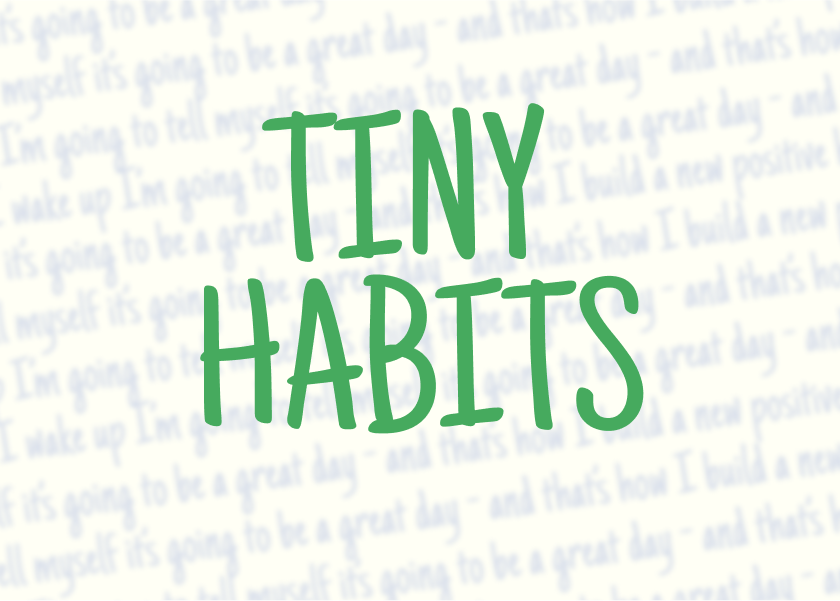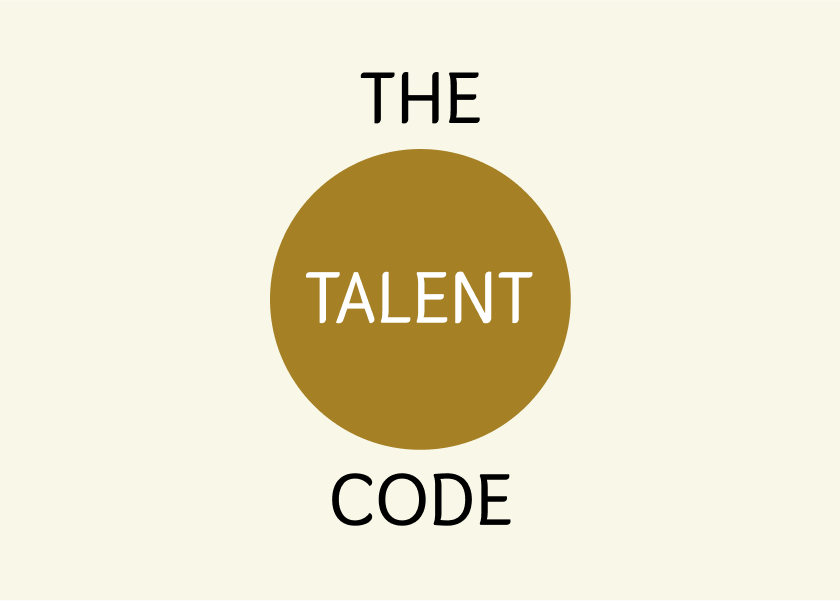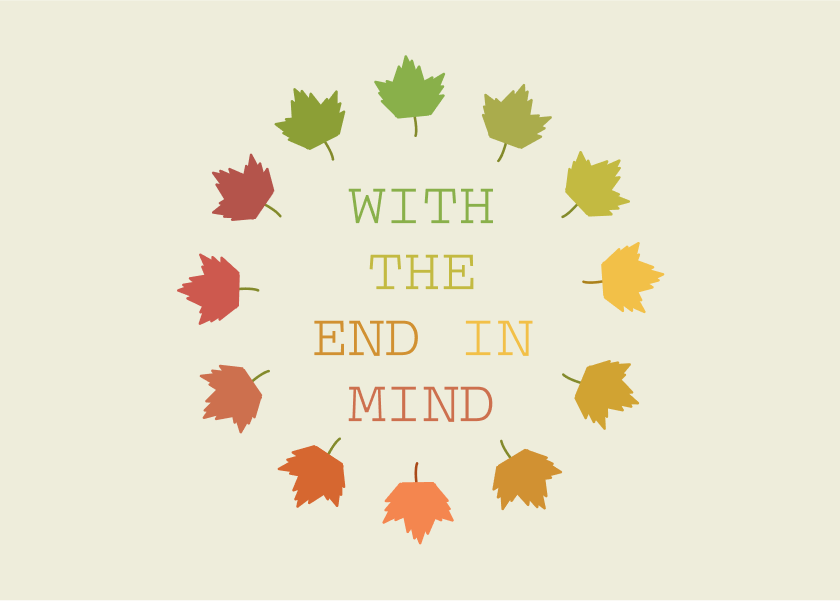Tiny Habits by BJ Fogg - Summary
Make tiny changes that lead to big results! This book will show you how small steps can help you achieve any goal. Learn how to create good habits and break bad ones using a simple, fun, and proven method. It's time to transform your life!

The following is a summary and review of the book Tiny Habits by BJ Fogg.
Are you struggling to make lasting changes in your life?
Do you find yourself setting ambitious goals only to fall short, feeling frustrated and demotivated? In Tiny Habits: The Small Changes That Change Everything, B.J. Fogg, a behaviour scientist from Stanford University, introduces a revolutionary approach to habit formation. This method focuses on making tiny, almost insignificant changes that, over time, lead to transformative results. This summary provides you with the core principles and actionable strategies from Fogg's book, saving you time while equipping you with the tools to create lasting positive habits.
Table of Contents
- About the Author
- Who Should Read This Book?
- Key Insights and Themes
- Detailed Summary
- Review
- Actionable Takeaways
- FAQs
- Conclusion
About the Author
B.J. Fogg, PhD, is a behaviour scientist and founder of the Behavior Design Lab at Stanford University. For over 20 years, Fogg has researched and taught how human behaviour works, with a focus on making behaviour change accessible and effective. He has coached over 40,000 people and has worked with industry leaders, including his former student, the co-founder of Instagram. Fogg's work is grounded in behaviour science and evidence-based methods, making him a credible voice in the field of habit formation.
Who Should Read This Book?
Tiny Habits is for anyone who wants to make lasting changes in their life but struggles with traditional approaches. This book is particularly beneficial for:
- Individuals who feel overwhelmed by large goals and don't know where to start.
- People who have tried various habit-formation techniques without success.
- Professionals looking to improve productivity, teamwork, and wellness within their organisations.
- Parents who want to instil positive habits in their children.
- Anyone seeking a simple, joyful, and sustainable method for personal transformation.
For example, if you've always wanted to exercise more but find the idea of going to the gym daunting, Tiny Habits will teach you how to start with something as small as doing two push-ups after brushing your teeth. Or, if you aim to reduce stress but can't seem to find time for meditation, you'll learn how to begin with just three breaths.
Key Insights and Themes
Here are the key takeaways from Tiny Habits:
- Tiny is Mighty: Small changes are easier to implement and sustain than large, radical ones.
- The Fogg Behavior Model (B=MAP): Behaviour happens when Motivation, Ability, and a Prompt converge at the same moment.
- Focus on Ability: Making a behaviour easier to do is more effective than relying on motivation.
- The Power of Prompts: Prompts, or anchors, are essential for triggering new habits. Use existing routines as anchors for new, tiny habits.
- Emotions Create Habits: Positive emotions, specifically feeling successful, wire in new habits more effectively than rewards or willpower.
- Celebration: Celebrating tiny successes reinforces the habit loop and makes the behaviour more likely to be repeated.
- Personalisation: The Tiny Habits method is customisable. You choose the habits that align with your aspirations and abilities.
- Outsmart Motivation: High motivation is unsustainable, instead rely on making the behaviour easy.
- Habits Grow Naturally: When you apply the Tiny Habits method consistently, your habits will scale naturally.
- Help yourself feel successful: Prioritise the feeling of success over achieving it.
Detailed Summary
Introduction: Change Can Be Easy (and Fun)
B.J. Fogg introduces the core idea that change can be easy and even fun by starting with tiny habits. He highlights the alarming levels of stress, sleeplessness, and obesity, noting the gap between what people want and what they actually do. The Tiny Habits method bridges this gap by focusing on small, manageable changes that don't rely on willpower or accountability measures. The method is based on years of research and testing with over 40,000 people, proving that it replaces misunderstandings with proven principles.
Motivation—Focus on Matching
Fogg emphasizes the importance of matching behaviours to your existing motivations and aspirations. He introduces the concept of the Motivation Wave, explaining that high motivation is unsustainable. Instead of relying on fleeting motivation, the book advises focusing on clarifying aspirations and choosing behaviours that align with those aspirations. The Focus Mapping method helps identify Golden Behaviours—those that are both impactful and feasible.
Ability—Easy Does It
Making a behaviour easy to do is more reliable than trying to increase motivation. Fogg discusses three approaches to simplify behaviours:
- Increase Your Skills: Improve your ability to perform the behaviour through research, tips, or classes.
- Get Tools and Resources: Obtain the necessary tools to make the behaviour easier.
- Start Tiny: Break down the behaviour into a Starter Step or scale it back to be super tiny.
The Ability Chain illustrates how time, money, physical effort, mental effort, and routine all impact a behaviour’s difficulty.
Prompts—The Power of After
Prompts are the invisible drivers of our lives, and no behaviour happens without one. Fogg introduces the concept of Anchor Moments, precise events that trigger new habits. The recipe for Tiny Habits is: "After I (ANCHOR), I will (NEW HABIT)". When choosing anchors, consider:
- Match the Physical Location: Find an anchor in the same location as the new habit.
- Match the Frequency: Sequence the new habit after an anchor that happens as often as you want to perform the habit.
- Match the Theme/Purpose: Choose anchors with a similar theme or purpose as the new habit.
Emotions Create Habits
Emotions are key to wiring in new habits, and feeling successful is more important than actually being successful. Fogg introduces Fogg Maxim #2: Help people feel successful. He encourages readers to celebrate tiny successes to create positive feelings (Shine) that reinforce the habit loop. Celebrations can include:
- Songs You Love: Sing or hum a happy song.
- Physical Movements: Do a fist pump or a short dance.
- Verbal Statements: Say phrases like "Woo-hoo!" or "Awesome!".
- Sound Effects: Use sounds like a trumpet fanfare.
- Visualisations: Imagine happy and successful scenarios.
Growing Your Habits from Tiny to Transformative
When the Tiny Habits method is applied consistently, habits will scale naturally. Habits grow through:
- Growth: Increasing the duration or intensity of a habit.
- Multiplication: Creating new habits that stem from existing ones.
Success leads to success, and the frequency of successes is more important than the size. Key skills of change include:
- Behaviour Crafting: Knowing how many new habits to do at once and when to add more.
- Self-Insight: Knowing which new habits will have meaning to you.
Untangling Bad Habits: A Systematic Solution
Bad habits are not fundamentally different from good habits. The Behaviour Change Masterplan provides a comprehensive approach to disrupting unwanted habits. The three phases are:
- Focus on Creating New Habits: Start by creating positive habits.
- Stop Specific Behaviours: Focus on stopping specific behaviours related to the old habit.
- Swap In a New Habit: Replace the old habit with a new one.
To stop a bad habit, identify specific habits that contribute to the general one, and then remove the prompt, decrease ability, or reduce motivation.
How We Change Together
Behaviour Design is not a solitary pursuit. The principles of Behavior Design can help effect change in households, work teams, and communities. Strategies include:
- The Role Model: Lead by example and inspire others through your own actions.
- The Ninja: Subtly introduce Behavior Design techniques without others knowing.
- The Ringleader: Help the group clarify aspirations, make the Golden Behaviour easy, and celebrate success.
The Small Changes That Change Everything
By creating habits using the Tiny Habits method, habits become far from tiny, they are mighty. One person starts one habit that builds to two habits that builds to three habits that changes an identity that inspires a loved one who influences their peer group and changes their mindset, which spreads like wildfire and disrupts a culture of helplessness, empowering everyone and slowly changing the world. You have a system for change, which means you don’t have to guess. You can design for whatever aspiration or outcome you want.
Review
Tiny Habits provides a fresh and effective approach to habit formation, emphasising simplicity and positive reinforcement.
Strengths:
- Actionable Advice: The book offers practical exercises and clear steps for creating new habits and breaking old ones.
- Evidence-Based: The method is grounded in research and testing, making it reliable and effective.
- Customisable: The Tiny Habits method is flexible and can be tailored to individual needs and aspirations.
- Emphasis on Positive Emotions: The focus on celebration and feeling successful makes the process enjoyable and sustainable.
Weaknesses:
- Simplicity: Some readers may find the emphasis on tiny changes too simplistic for addressing complex, deeply ingrained habits.
- Repetition: The core concepts are repeated throughout the book, which may feel redundant to some readers.
Overall, Tiny Habits is a valuable resource for anyone seeking a sustainable and joyful approach to personal transformation.
Actionable Takeaways
Here’s how to apply these lessons in real life:
- Identify an Aspiration: Clarify what you want to achieve, whether it’s exercising more, reducing stress, or improving productivity.
- Brainstorm Behaviours: Come up with a list of behaviours that could lead to your aspiration.
- Map Focus: Sort behaviours based on impact and feasibility.
- Find Your Golden Behaviours: Identify behaviours that are both impactful and easy to do.
- Make it Tiny: Scale back your chosen behaviour to a tiny, almost effortless step.
- Find an Anchor: Choose an existing routine to trigger your new tiny habit.
- Celebrate Immediately: Create a positive feeling after performing the tiny habit to reinforce the behaviour.
- Experiment and Adjust: Be open to revising your habits and anchors as needed.
FAQs
- What is Tiny Habits about? Tiny Habits is about creating lasting change by starting with small, manageable habits. It introduces a method based on the Fogg Behavior Model (B=MAP), emphasizing the importance of motivation, ability, and prompts. The book provides practical strategies for designing new habits, breaking old ones, and making positive changes in various areas of life.
- Is Tiny Habits worth reading? Yes, Tiny Habits is worth reading for anyone who struggles with traditional habit-formation approaches. Its emphasis on simplicity, positive emotions, and personalisation makes it a sustainable and enjoyable method for personal transformation. The book offers actionable advice, evidence-based strategies, and practical exercises to help readers create lasting positive change.
Conclusion
Tiny Habits offers a practical and joyful approach to creating lasting change. By focusing on small, manageable steps and celebrating successes, anyone can transform their life and achieve their aspirations. Embrace the power of tiny, and start building the habits that will change everything.
As an Amazon Associate, ShelfHelp may earn money from qualifying purchases. Needless to say, ShelfHelp only includes affiliate links to books we recommend and think are worth your time reading.




